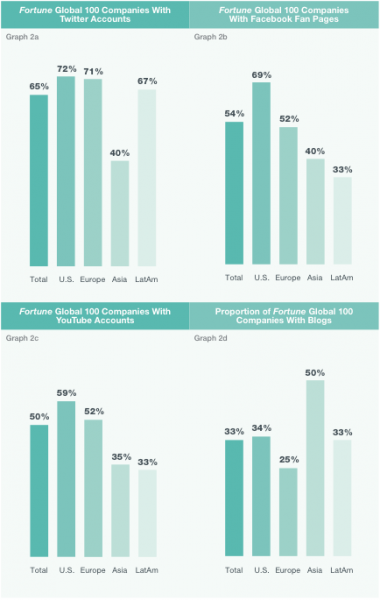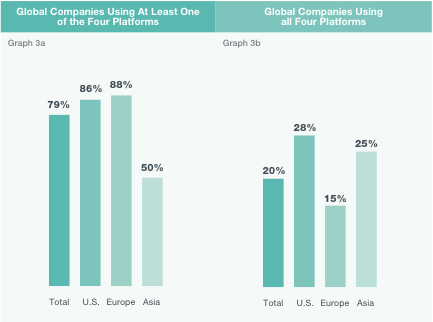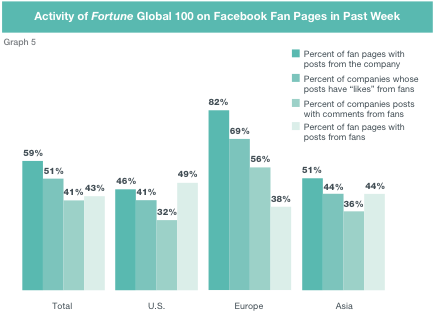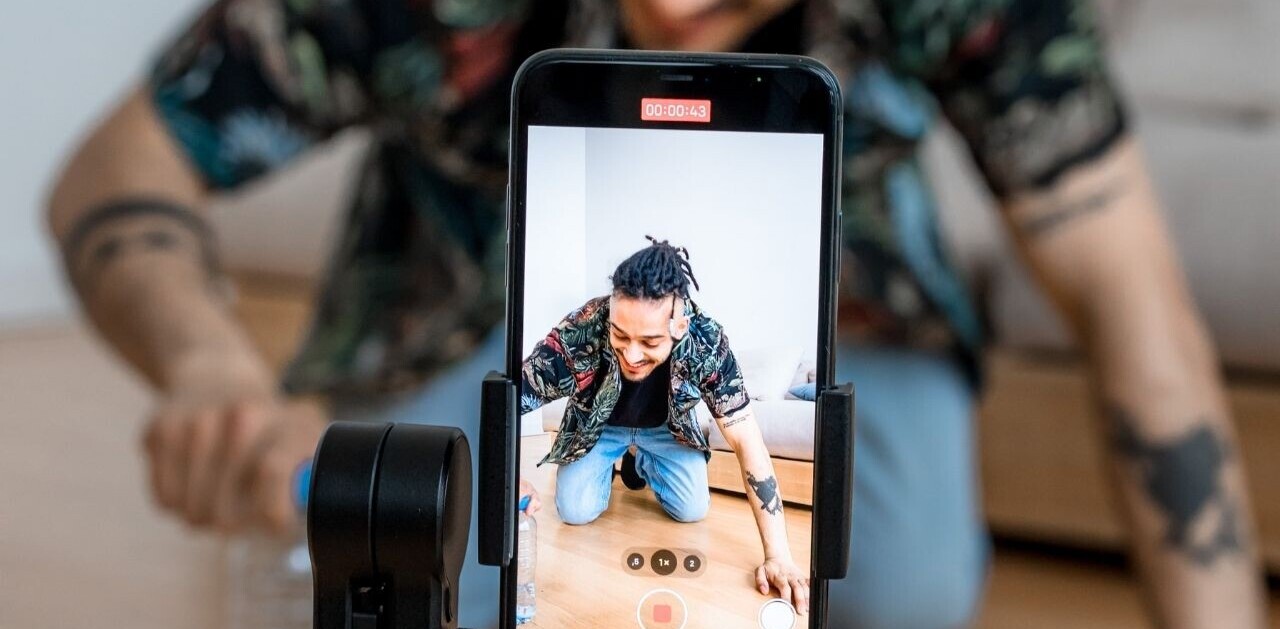![The Doctor Is In: A Global Social Media Check-up [Case Study]](https://img-cdn.tnwcdn.com/image?fit=1280%2C720&url=https%3A%2F%2Fcdn0.tnwcdn.com%2Fwp-content%2Fblogs.dir%2F1%2Ffiles%2F2010%2F08%2FUAC-popup.jpg&signature=7bde879fda790eebe2c9b249ab3885e9)
 The scene has been steadily changing — social media is putting control into the hands of the consumer. It’s been long coming, and organizations can’t avoid it.
The scene has been steadily changing — social media is putting control into the hands of the consumer. It’s been long coming, and organizations can’t avoid it.
Many organizations have been interacting with their community through blogs, but with the popularity of networks like Facebook, Twitter, and YouTube, the stage for sending out promotions and messages is immense — and the audience is listening intently.
Global PR firm Burson-Marsteller collected data from the top 100 companies of Fortune‘s Global 500 between November 2009 and January 2010 to create the Social Media Check-up study — and the results are surprising.
Proliferation: The Numbers
Basically, Burson-Marsteller found that, of the Fortune Global 100 companies, 65% have active Twitter accounts, 54% have Facebook fan pages, 50% have YouTube channels and 33% have corporate blogs (Graph 1).


Regionally, you can see the differences in overall per type of network: Twitter at 72% in the U.S., Facebook at 69% in the U.S., YouTube at 59% in the U.S., and Blogs at 50% in Asia. In Graphs 3a and b, you can see that more than three-quarters (79%) of the top 100 companies are using at least one of the social media platforms reviewed, and only 20% are utilizing all four platforms.

Initially, it may seem like companies in the U.S. win at most of the networks, when it comes to volume of accounts, but it can be deceiving.
A Closer Look
The companies that do interact on Twitter, are extremely active — 82% have tweeted in the past week, 59% have posted to their Facebook pages in the past week, 68% posted a video to YouTube in the past month, and 36% posted an entry to a corporate blog.
Posting rates to Twitter are almost identical across the board, and European companies are the most diligent in posting to their Facebook fan pages.
A large disparity lies between blog posting — 83% of European companies have posted in the last month, compared to 11% of U.S. companies. The region that posts more frequently though? The Asian companies, at 14 posts per month.
All this means is that some companies prefer one platform over another to communicate with their audience.
How well are they engaging though?
Twitter creates a great real-time two-way street when it comes to businesses interacting with their community. Twitter’s popularity has been proven, and 42% of the companies were being tweeted about by others, indicating just that.
Companies are definitely responding — overall 38% are responding to people’s tweets, indicating that companies aren’t simply broadcasting from the loudspeaker. In Graph 4 you can see the regional stats for interaction on Twitter.

Facebook fan pages are continuously gaining popularity. This is also a two-way street — it indicates that not only are companies willing to engage, but that consumers are opening up to doing so through social media. Graph 5 goes into the specifics of Facebook interaction.

YouTube
Even YouTube has sparked interest in consumers, with many corporate YouTube channels sporting at least several hundred subscribers. Fifty-four percent of the YouTube channels have comments from viewers, which indicates that the platform is not only a place to share videos, but to interact with consumers as well.
Blogs
Though companies have become less active on blogs, the commenting sections remain a viable place to interact — only 11% of U.S. blogs has posts but 90% of those with posts had comments. So, it might seem that blogs have gone down in popularity, but it’s still an important part to include in the mix. There tend to be certain limitations with other platforms, when it comes to sharing.

We All Do It Differently
- Korea – Koreans participate in online “cafe” discussion boards, with millions of members interacting. Cyworld, Korea’s top network, is joined by almost half of Korean Internet users. It’s anonymous, so that could be a major reason for its popularity. Micro-blogging has recently become mainstream, and the dominant player in that space is me2day, as well as Twitter. Interestingly, non-Korean-based social media websites, like Facebook, have little market share.
- China – Large state-owned firms have adopted social media very slowly, but the larger, private firms are more aggressive users by comparison. But, keep in mind that Chinese consumers are very enthusiastic users of social media, and the number of Chinese Internet users has more than tripled to about 387 million since 2005. The most popular things? Discussion boards, social networks, video sharing, and online games.
- Italy – One-half of Internet users in Italy have joined Facebook, so companies there definitely take advantage of that audience. It’s win-win since the recession has forced companies to become more creative in finding ways to reach their community. Other popular networks following Facebook in popularity include Netlog, Badoo, MySpace and WindowsLive.
- France – French companies have not been shy with using social media tools, but many of the Twitter accounts are limited to pushing out news, mainly due to retain the control over what’s shared and said about them. Facebook has attracted 18 million unique users per month in France, followed by Skyrock.com (a blogging platform).
- Japan – Although Japan has a reputation for cutting-edge technologies, Japanese people tend to be reluctant to share their thoughts and experiences publicly. Services such as YouTube, Wikipedia, and Twitter have been gaining popularity, but they’ve developed a few homegrown sites catering to their culture — Mixi, FC2, and Nico Nico Douga.
- Brazil – Forty-five percent of Brazilians engage in social networks, with a staggering 72% of those ages 18 to 25. Twitter has reached 8.7 million users in Brazil and those users spend an average of 57 minutes browsing. In comparison, U.K. users spend 38 minutes and U.S. users spend 32 minutes. Brazilian companies caught onto Twitter almost immediately, using promotions, offers, and contests to attract users. One of their most successful networks though? Orkut — with more than 80% of users creating profiles.

![]()



Is More Always Better?
Spending time in the social media arena as a consumer, it’s often the case that you’ll come across companies with multiple accounts across platforms. For example, each active company has 4.2 Twitter accounts, 2.1 Facebook fan pages, 1.6 YouTube channels, and 4.2 blogs. But is more better?
That all depends.
Company blogs are more likely to be managed in a more cohesive way, and the platform really caters to this.
Those companies with multiple Twitter accounts usually run a primary account, along with either local market offices or some sort of special division within the company — which is understandable. Sometimes though, it’s tough for the consumer to figure out which is the primary.
Not only that, but often times there are name squatters or abandoned accounts. These may have followers and not even a single tweet. This can be pretty detrimental to the customer experience, as people may become frustrated when searching for a place to interact with the company. It just doesn’t look good.
Worst-case scenario: an employee participating without company guidance can sometimes tarnish a company’s reputation, and generally doesn’t convey the brand’s proper image and message.

Your To-Do List
To make sure you get the most out of your company’s social media experience, there are a few things you should do:
- Develop a social media strategy. Take a look at your business objectives, and be consistent with your brand and message. Organize and budget. Keep tabs. Take advantage of social media applications.
- Hammer out a social media policy. Make sure your employees understand the limits and implications of their participation. Guide them!
- Respond and contribute to the community. This is huge. Get your community passionate. Remember though, everything is real-time, so sometimes you can’t afford to wait — even a day of negative dialogue can damage reputation.
- Be transparent, and make sure you stick it out. Yes, bad things can happen, but it doesn’t mean you can just avoid it! The days of hiding behind walls are long gone. The Internet never forgets! Something negative could even prove to be good in the end if you stay honest — people appreciate that.
It’s great to see so many tools being used extensively by companies — not only by corporate headquarters, but also by local market offices, various divisions of companies and even for one-time corporate events. Social media is creating many opportunities — as well as wonderful benefits — by helping different niches of a company reach their target audiences. We must keep in mind though, that it can introduce challenges by creating mixed messages depending on how multiple accounts are managed, and this can be detrimental to your brand. Accepting the changing scene and incorporating the tips above can help create a consistent brand message and a great connection with your community.
[Image credits: Twitter bird, me; Graphs, Burson-Marsteller study.]
Get the TNW newsletter
Get the most important tech news in your inbox each week.





